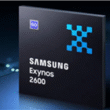Summary:
- Xiaomi’s latest mobile phone series includes three models: Xiaomi 17, Xiaomi 17 Pro, and Xiaomi 17 Pro Max, featuring screen sizes of 6.3, 6.3, and 6.9 inches respectively.
- A recent voting event revealed that preferences for screen size among consumers are very close, with 6.9-inch screens currently leading the pack.
- Consumer preferences reflect a balanced trend: large screens for experience, small screens for portability, and medium screens for versatility.
Exploring Consumer Preferences for Smartphone Screen Sizes: Xiaomi 17 Series Insights
In the rapidly evolving world of mobile technology, the choice between larger and smaller screen sizes continues to be a topic of debate among consumers. Recent findings highlight distinct preferences that can guide future developments in smartphone design.
The newly launched Xiaomi 17 series introduces three impressive models: the Xiaomi 17, Xiaomi 17 Pro, and the Xiaomi 17 Pro Max. Each model caters to different user needs, featuring 6.3-inch displays for the first two models and a larger 6.9-inch display for the Pro Max. This diversity in size aims to accommodate a wide audience, reflecting the ongoing split between what can be termed the "big screen party" and the "small screen party."
Understanding Screen Size Preferences
To gauge consumer sentiment regarding screen sizes, a voting initiative led by Lu Weibing garnished participation from over 23,000 users. The results of this poll provide valuable insight into current market trends and preferences for mobile devices.
The polling results revealed a remarkable balance among the three screen sizes. The 6.9-inch display emerged as the preferred choice, garnering 7,772 votes, followed closely by the 6.59-inch option with 7,558 votes. The 6.3-inch model, while still popular, lagged slightly behind at 7,263 votes. This outcome underscores the ongoing rivalry between the consumer segments favoring larger screens versus those who lean towards more compact devices.
Insights from Consumer Behavior
Lu Weibing, reflecting on the results, commented on how closely matched the preferences were. The nearly equal distribution of votes illustrates an intriguing pattern in consumer behavior:
- Large Screen Enthusiasts: This group favors the immersive experience offered by larger displays, often prioritizing viewing quality for activities such as gaming and streaming.
- Small Screen Advocates: These users appreciate the portability and ease of handling that smaller devices provide, making them ideal for everyday tasks and mobility.
- Medium Screen Seekers: Users gravitating towards medium screens, like the 6.59-inch option, aim to strike a balance between experience and portability, tailored for versatility in various situations.
The Shift in Consumer Priorities
As technology advances, consumers are becoming increasingly discerning about their mobile devices. The choices made in screen size are not mere preferences; they reflect broader lifestyle choices. For instance, users seeking larger screens are not just after size—they are in pursuit of an experience that blurs the line between mobile and desktop computing.
Conversely, those who opt for smaller screens may do so for reasons such as convenience, aiming for a device that easily fits in a pocket while still delivering essential functionalities. The rise of medium-sized screens indicates a shift towards attempting to meet the needs of both camps, suggesting a potential opportunity for manufacturers to cater to evolving consumer expectations.
Implications for Future Mobile Designs
Understanding these consumer preferences is crucial for smartphone manufacturers. As trends continue to evolve, companies like Xiaomi are poised to leverage this data in their design and marketing strategies. By realizing the importance of screen size in relation to user experience, companies can better align their products with market demands.
As the Xiaomi 17 series continues to make waves in the market, it serves as a case study in balancing the technological advances available with the specific desires of different consumer segments.
In conclusion, the impressive response to screen size preferences in the Xiaomi 17 lineup reflects a nuanced understanding of user needs. As technology continues to develop, so too will the ways in which manufacturers respond to and anticipate these shifting preferences, paving the way for the next generation of smartphones.
Final Thoughts
The debate over screen sizes in smartphones is far from over, but Xiaomi’s opportunity to analyze consumer preferences sets the stage for future innovations. As more users express their preferences, it will be fascinating to watch how the industry adapts and evolves.
This SEO-optimized article effectively presents the relevant information in a professional tone while maintaining accessibility and engagement for readers interested in smartphone technology trends.








